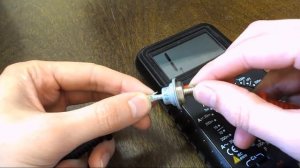
 2:02:59
2:02:59
2024-09-25 13:14

 1:56
1:56

 1:56
1:56
2025-06-02 16:01

 7:49
7:49

 7:49
7:49
2025-04-12 08:50

 4:52
4:52

 4:52
4:52
2024-04-23 06:27

 3:08
3:08

 3:08
3:08
2024-01-26 17:39

 4:14
4:14

 4:14
4:14
2025-01-10 12:11

 9:04
9:04

 9:04
9:04
2023-10-24 07:46

 8:56
8:56

 8:56
8:56
2024-11-03 14:36

 26:35
26:35

 26:35
26:35
2025-04-07 14:25

 1:31
1:31

 1:31
1:31
2024-03-13 18:48

 0:55
0:55

 0:55
0:55
2023-12-10 04:16

 12:36
12:36

 12:36
12:36
2017-10-12 08:18

 7:38
7:38

 7:38
7:38
2023-09-30 17:29

 10:38
10:38

 10:38
10:38
2023-08-19 17:09

 4:23
4:23

 4:23
4:23
2023-09-07 18:55

 3:09
3:09

 3:09
3:09
2024-01-05 11:58

 2:30
2:30

 2:30
2:30
2025-03-06 19:36

 3:25
3:25
![Сардор Хайруллаев - Келма (Премьера клипа 2025)]() 4:10
4:10
![Азиз Абдуллох - Аллохнинг айтгани булади (Премьера клипа 2025)]() 3:40
3:40
![MARSO - Дура (Премьера клипа 2025)]() 3:05
3:05
![Премьера клипа! Мария Зайцева – Жаль моя]() 4:25
4:25
![Курбан Ожахлиев - Топи (Премьера клипа 2025)]() 2:52
2:52
![Женя Белоусова - Кто тебе сказал (Премьера клипа 2025)]() 3:27
3:27
![Зафар Эргашов - Мусофирда каридим (Премьера клипа 2025)]() 4:58
4:58
![Премьера клипа! Игорь Крутой — Зонтик]() 4:00
4:00
![ИЮЛА - Ты был прав (Премьера клипа 2025)]() 2:21
2:21
![Мария Зайцева - Жаль моя (Премьера клипа 2025)]() 4:25
4:25
![Ислам Итляшев - Скандал (Премьера клипа 2025)]() 2:08
2:08
![Сарвар Азим - Бахтим (Премьера клипа 2025)]() 4:10
4:10
![Александра Воробьева - Ход королевы (Премьера клипа 2025)]() 3:32
3:32
![M1DNITE - Ghost Touch]() 3:36
3:36
![Динара Швец - Новая история (Премьера клипа 2025)]() 3:45
3:45
![MILEN - Украду тебя (Премьера 2025)]() 3:40
3:40
![Игорь Кибирев - Пьяная ночь (Премьера клипа 2025)]() 3:08
3:08
![Наталья Влади - А я такая (Премьера клипа 2025)]() 2:21
2:21
![Игорь Крутой - Зонтик (Премьера клипа 2025)]() 4:00
4:00
![W24 - I Gotta Feeling]() 3:49
3:49
![Стив | Steve (2025)]() 1:33:34
1:33:34
![Хитмэн (2007) (Расширенная версия)]() 1:34:14
1:34:14
![Легенды: Гробница дракона (2013)]() 1:32:30
1:32:30
![Отец]() 1:32:56
1:32:56
![Терминатор 2: Судный день | Terminator 2: Judgment Day (1991) (Гоблин)]() 2:36:13
2:36:13
![Ниже нуля (2021) Netflix]() 1:46:35
1:46:35
![Первый день моей жизни]() 1:56:45
1:56:45
![Макс Пэйн (2008) (Расширенная версия)]() 1:42:59
1:42:59
![Токсичный мститель (2023)]() 1:42:11
1:42:11
![Гонка (2013) 1080]() 1:37:04
1:37:04
![Чумовая пятница 2 | Freakier Friday (2025)]() 1:50:38
1:50:38
![Код 3 (2025)]() 1:39:52
1:39:52
![Последний клиент]() 1:33:23
1:33:23
![История моей жены]() 2:42:50
2:42:50
![Девушка из каюты №10 (2025)]() 1:35:13
1:35:13
![Плачущий убийца (1995)]() 1:41:57
1:41:57
![Плохой Cанта 2 | Bad Santa 2 (2016) (Гоблин)]() 1:28:32
1:28:32
![Облако (2024)]() 2:04:02
2:04:02
![Терминатор | The Terminator (1984) (Гоблин)]() 1:47:17
1:47:17
![Стив (2025)]() 1:33:30
1:33:30
![Дорога домой (2021) / Back to the Outback]()
 1:31:40
1:31:40
![Эти прекрасные мультяшки: Рождественский выпуск (1992) / It's a Wonderful Christmas Special]()
 22:22
22:22
![ЛЕГО Манки Кид: Рождение героя (2020) / Lego Monkie Kid: A Hero Is Born]()
 45:00
45:00
![Плохие парни: Очень плохой праздник (2023) / The Bad Guys: A Very Bad Holiday]()
 22:30
22:30
![Альфа и Омега 5: Семейные каникулы (2014) / Alpha and Omega: Family Vacation]()
 43:30
43:30
![Земля до начала времён 5: Таинственный остров (1997) / The Land Before Time V]()
 1:13:30
1:13:30
![Альфа и Омега 4: Легенда о Зубастой Пещере (2014) / Alpha and Omega 4]()
 45:14
45:14
![Альфа и Омега 6: Прогулка с динозавром (2015) / Alpha and Omega: Dino Digs]()
 47:29
47:29
![Альфа и Омега 7: Большое обледенение (2016) / Alpha and Omega 7: The Big Fureeze]()
 45:06
45:06
![Лоракс (2012) / The Lorax]()
 1:26:13
1:26:13
![Земля до начала времён 3: В поисках воды (1995) / The Land Before Time III]()
 1:10:48
1:10:48
![Ночная жуть Тайни Тун (1995) / Tiny Toon Night Ghoulery]()
 43:38
43:38
![Смурфики в кино (2025) / Smurfs]()
 1:29:33
1:29:33
![Земля до начала времён 13: Сила дружбы (2007) / The Land Before Time XIII]()
 1:15:39
1:15:39
![Иллюзионист (2010) / L'illusionniste]()
 1:19:53
1:19:53
![Земля до начала времён 11: Вторжение Мышезавров (2005) / The Land Before Time XI]()
 1:20:52
1:20:52
![Земля до начала времён 10: Великая миграция (2003) / The Land Before Time X]()
 1:24:21
1:24:21
![Странные чары (2015) / Strange Magic]()
 1:39:20
1:39:20
![Земля до начала времён 12: Великий День птиц (2006) / The Land Before Time XII]()
 1:20:30
1:20:30
![Союз зверей (2010) / Animals United]()
 1:33:07
1:33:07

 3:25
3:25Скачать видео
| 256x144 | ||
| 426x240 | ||
| 640x360 | ||
| 854x480 | ||
| 1280x720 |
 4:10
4:10
2025-10-13 12:31
 3:40
3:40
2025-10-18 10:34
 3:05
3:05
2025-10-17 11:37
 4:25
4:25
2025-10-18 17:45
 2:52
2:52
2025-10-11 12:23
 3:27
3:27
2025-10-16 11:15
 4:58
4:58
2025-10-18 10:31
 4:00
4:00
2025-10-18 17:45
 2:21
2:21
2025-10-18 10:16
 4:25
4:25
2025-10-17 11:28
 2:08
2:08
2025-10-14 10:40
 4:10
4:10
2025-10-11 12:49
 3:32
3:32
2025-10-11 12:12
 3:36
3:36
2025-10-12 18:00
 3:45
3:45
2025-10-15 10:45
 3:40
3:40
2025-10-15 11:15
 3:08
3:08
2025-10-16 11:32
 2:21
2:21
2025-10-14 11:07
 4:00
4:00
2025-10-18 10:19
2025-10-12 18:28
0/0
 1:33:34
1:33:34
2025-10-08 12:27
 1:34:14
1:34:14
2025-10-13 21:11
2025-10-10 08:28
 1:32:56
1:32:56
2025-10-13 11:37
 2:36:13
2:36:13
2025-10-07 09:27
 1:46:35
1:46:35
2025-10-14 21:34
 1:56:45
1:56:45
2025-10-13 11:38
 1:42:59
1:42:59
2025-10-15 16:40
 1:42:11
1:42:11
2025-10-14 21:50
2025-10-05 17:38
 1:50:38
1:50:38
2025-10-16 16:08
 1:39:52
1:39:52
2025-10-05 17:25
 1:33:23
1:33:23
2025-10-13 11:36
 2:42:50
2:42:50
2025-10-13 11:40
 1:35:13
1:35:13
2025-10-12 11:54
 1:41:57
1:41:57
2025-10-15 14:06
 1:28:32
1:28:32
2025-10-07 09:27
 2:04:02
2:04:02
2025-10-12 13:06
 1:47:17
1:47:17
2025-10-07 09:28
 1:33:30
1:33:30
2025-10-05 21:21
0/0

 1:31:40
1:31:40
2025-09-12 18:00

 22:22
22:22
2025-09-11 18:00

 45:00
45:00
2025-10-07 18:00

 22:30
22:30
2025-09-19 18:00

 43:30
43:30
2025-10-14 18:00

 1:13:30
1:13:30
2025-09-20 18:00

 45:14
45:14
2025-10-12 18:00

 47:29
47:29
2025-10-16 18:02

 45:06
45:06
2025-10-18 18:00

 1:26:13
1:26:13
2025-09-14 18:00

 1:10:48
1:10:48
2025-09-15 18:00

 43:38
43:38
2025-09-09 18:00

 1:29:33
1:29:33
2025-09-29 18:00

 1:15:39
1:15:39
2025-10-06 18:00

 1:19:53
1:19:53
2025-10-11 18:00

 1:20:52
1:20:52
2025-10-02 18:00

 1:24:21
1:24:21
2025-09-30 18:00

 1:39:20
1:39:20
2025-10-13 18:00

 1:20:30
1:20:30
2025-10-04 18:00

 1:33:07
1:33:07
2025-10-15 18:01
0/0

